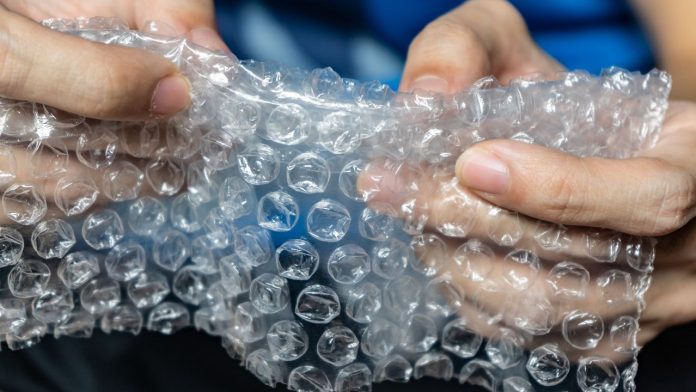Bubble wrap is one of the most commonly demanded shielding materials in packaging dainty items. Shipping and handling are cushioned with its signature air-filled bubbles, making it shockproof.
However, not all bubble wraps are the same, and several different types are designed for specific use. Businesses and consumers who know where to look can gain insight into the different kinds of bubble wraps provided and enjoy choosing the type of packaging that completes their needs.
This article will discuss the different types available in the market and how to use bubble wrap correctly.
Various Types of Bubble Wraps and Their Usage
1. Standard Bubble Wrap
Standard bubble wrap is a general-purpose, versatile packaging material for protecting usually fragile items like electronics, glassware, and ceramics. Air-filled bubbles give cushioning and shock absorption, protecting the wrap.
Available in different bubble sizes (depending on the protection you want for lightweight items or bulkier goods), it will come in small bubbles to protect lighter items and giant bubbles for bigger things. Affordable and easy-to-find standard bubble wrap is a much-loved option for shipping and storing.
2. Low-Grade Bubble Wrap
Bubble wrap designed for low-grade protection is used when you do not need heavy-duty protection. It is thinner and has smaller bubbles, so it is suitable for lightweight and non-fragile things, such as clothing, books, and paper goods.
This kind of wrap will give you the protection of the surface against minor scratches or bumps, but no weight is added for impact. Because it is less fragile than ground shipments, it is a cost-effective means of shipping when packaging costs and shipping weight are minimized.
3. High-Grade Bubble Wrap
With high-grade bubble wrap, it’s well protected, and final durability is enhanced, which is great not only for small electronics to be shipped over average distances — but also for more extensive, heavy equipment or furniture where you want to ensure it arrives in one piece. This type of wrap has larger bubbles, the material is more substantial, and they cushion better.
4. Anti-static Bubble Wrap
Anti-static bubble wrap copiously protects electronic devices against damage due to the release of electrostatic particles. An anti-static finish is added to fend off the gathering of static electricity, which meddles with sensitive electronic elements.
This bubble wrap can package computer parts, circuit boards, and electronic equipment. It is easily identifiable by its unique pink color, separate from off-white standard bubble wrap.
In addition to cushioning, it safeguards electronic items from static-related damage.
5. Temperature-Controlled Bubble Wrap
This bubble wrap is a packaging material designed to meet temperature-sensitive requirements. This is especially suited for products requiring refrigeration or heat protection and closely related to the food, pharmaceutical, or biotechnological industries.
The wrap often includes a reflective layer or thermal insulation to preserve temperature consistency. It is frequently paired with gel packs or cooling agents to ensure perishable goods, like food or medicine, stay fresh and safe during transportation.
6. FDA-Grade Bubble Wrap
Studies show that FDA-grade bubble wrap is produced to obey the FDA food contact standard requirements. It does not contain toxic compounds and has no smell; it is useful for packing consumable items, food products, or products that may come in contact with foods.
This bubble wrap type extensively packs perishable items like fruits, vegetables, and other baked foods. It provides cushioning and protective benefits while ensuring food safety compliance.
Conclusion
Bubble wrap is one of the best packaging materials required to preserve delicate items, and it is available in different types on the market. These wraps can be used for light and non-brittle things such as toys or books and for more sensitive and valuable electronics or home appliances. If you know these differences, your products will be adequately protected depending on the level required during transit.







